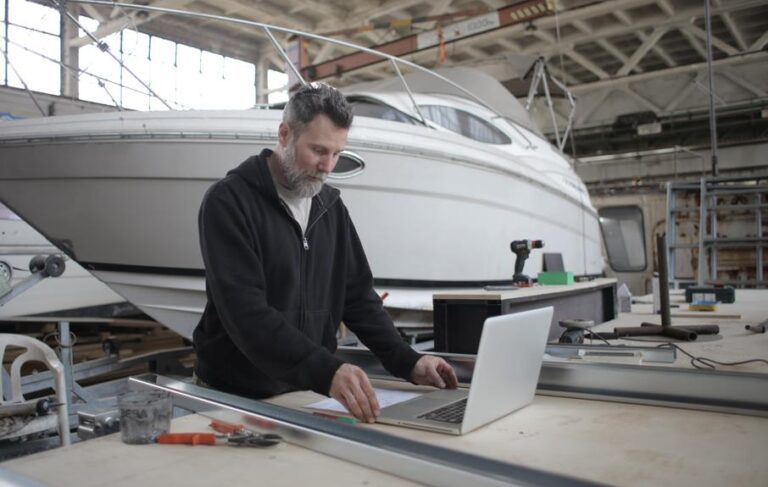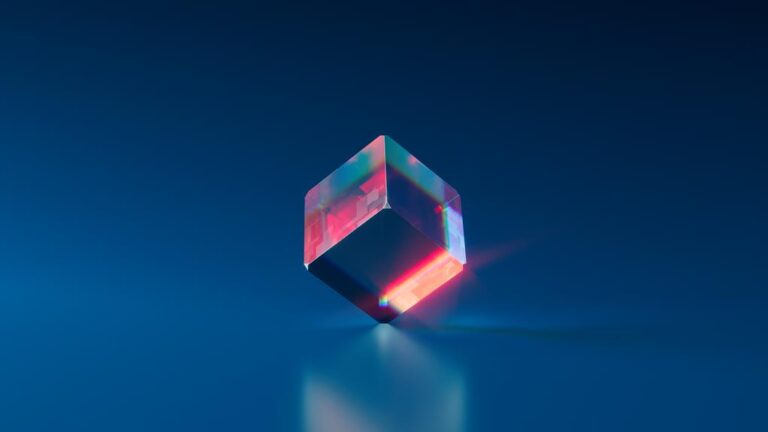Upgrading 3D Printer Controllers and Firmware: Boosting Performance
In the ever-evolving world of 3D printing, staying ahead of the game means constantly seeking ways to enhance performance. Upgrading 3D printer controllers and firmware holds the key to unlocking a new level of precision and efficiency.
Just as a skilled conductor can bring out the best in an orchestra, these upgrades serve as the maestro, orchestrating the smooth operation of your 3D printer.
In this article, we will delve into the benefits, considerations, and step-by-step guide to upgrading controllers and firmware, empowering you to achieve liberation in your printing endeavors.
Key Takeaways
- Upgrading 3D printer controllers and firmware optimizes and enhances overall performance of the printing process.
- Firmware upgrades provide new features, bug fixes, and enhanced print quality.
- Upgrading controllers ensures stable and consistent flow of power with a high-quality power supply unit.
- Consider compatibility, features, support, and upgradability when upgrading 3D printer controllers.
Benefits of Upgrading 3D Printer Controllers and Firmware
One of the key benefits of upgrading 3D printer controllers and firmware is that it allows users to optimize and enhance the overall performance of their printing process. Upgrading the controllers and firmware can significantly improve the efficiency and accuracy of the printer, resulting in higher quality prints and increased productivity.
When upgrading the controllers and firmware, it is important to consider the power supply units for 3D printers. By using a high-quality power supply unit, the printer can receive a stable and consistent flow of power, which is essential for smooth operation and reliable printing. This ensures that the printer doesn't experience any power fluctuations or interruptions that may lead to print errors or failures.
Another benefit of upgrading the controllers and firmware is the ability to integrate the printer with a dedicated enclosure. A 3D printer enclosure helps to regulate the internal temperature and humidity, creating an optimal printing environment. Additionally, enclosures help to reduce noise levels, making the printing process quieter and more pleasant.
Understanding the Role of Controllers in 3D Printing
To fully comprehend the intricacies of 3D printing, it is essential to understand the crucial role that controllers play in the overall process. Controllers serve as the brain of a 3D printer, controlling and coordinating various components to ensure precise and accurate printing.
Here are four key aspects that highlight the significance of controllers in 3D printing:
- Interfacing with the user: Controllers provide a user-friendly interface, allowing users to input design files, adjust settings, and monitor the printing progress. This interaction ensures a seamless and intuitive user experience.
- Controlling movement: Controllers regulate the movement of the printer's motors, determining how the print head moves along the X, Y, and Z axes. This precise control enables the creation of intricate and complex designs with high accuracy.
- Managing temperature: Controllers monitor and control the temperature of various components, such as the extruder and heated bed. Maintaining optimal temperatures is crucial for achieving consistent print quality and preventing issues like warping or clogging.
- Error detection and correction: Controllers incorporate advanced algorithms to detect and correct errors during the printing process. This ensures that any deviations or anomalies are identified and resolved, resulting in successful prints.
Understanding the role of controllers in 3D printing sets the foundation for exploring firmware upgrades for enhanced performance. These upgrades can further optimize the capabilities of the controller, improving print speed, accuracy, and overall print quality.
Exploring Firmware Upgrades for Enhanced Performance
By delving into firmware upgrades, one can unlock the potential for enhanced performance in 3D printer controllers. Firmware upgrades refer to the process of updating the software that runs on the controller board of a 3D printer. These upgrades offer several benefits, including improved functionality, increased reliability, and enhanced printing capabilities.
One key advantage of firmware upgrades is the ability to optimize and fine-tune the performance of the 3D printer. Upgrading the firmware allows users to take advantage of new features and improvements that may have been released since the initial purchase of the printer. These updates often address bugs, enhance print quality, and introduce new functionalities that can greatly enhance the overall printing experience.
In addition to performance enhancements, firmware upgrades also provide an opportunity to customize and personalize the 3D printer. Some firmware versions allow users to modify various settings, such as acceleration, jerk, and temperature control, to better suit their specific needs and preferences. This level of control empowers users to optimize their printer's performance for different materials, print speeds, and desired outcomes.
Furthermore, firmware upgrades can also improve the safety and security of the 3D printer. Manufacturers often release firmware updates that address potential vulnerabilities or address safety concerns. By regularly updating the firmware, users can ensure that their printer is operating with the latest security patches and is protected against potential risks.
Key Considerations for Upgrading 3D Printer Controllers
When upgrading 3D printer controllers, it is important to carefully consider the compatibility, functionality, and support of the new controller. This ensures a seamless transition and optimal performance for your 3D printer. Here are some key considerations to keep in mind:
- Compatibility: Ensure that the new controller is compatible with your specific 3D printer model. Check for compatibility with the printer's hardware, firmware, and software to avoid any compatibility issues.
- Functionality: Evaluate the features and capabilities of the new controller. Consider if it offers any additional functionalities that can enhance your printing experience, such as improved print quality, faster print speeds, or support for advanced printing techniques.
- Support: Look for a controller that is well-supported by the manufacturer or the 3D printing community. This ensures that you can easily find resources, documentation, and troubleshooting assistance if needed.
- Upgradability: Consider the potential for future upgrades and expansion. Look for a controller that allows for firmware updates and supports future hardware upgrades, giving you the flexibility to adapt to new technologies and advancements in the 3D printing industry.
By carefully considering these factors, you can make an informed decision when upgrading your 3D printer controller, leading to improved performance and functionality.
Now, let's move on to the next section, which provides a step-by-step guide to upgrading the firmware on your 3D printer.
Step-by-Step Guide to Upgrading Firmware on Your 3D Printer
To ensure optimal performance and functionality, it is important to regularly upgrade the firmware on your 3D printer. Upgrading the firmware provides benefits such as improved print quality, enhanced features, and bug fixes.
It is recommended to check for firmware updates from the manufacturer and update your firmware at least once every few months to stay up to date with the latest improvements.
In case of any issues during the upgrade process, troubleshooting common problems can help resolve them efficiently.
Benefits of Firmware Upgrades
Enhancing functionality and optimizing performance, firmware upgrades provide a valuable solution for maximizing the capabilities of your 3D printer. By updating the firmware, you can unlock several benefits that will enhance your printing experience:
- Improved Print Quality: Firmware upgrades often include optimizations that enhance print quality, resulting in smoother surfaces, reduced layer lines, and better overall print accuracy.
- Expanded Feature Set: Upgrading firmware can introduce new features and functionalities to your 3D printer, allowing you to explore new printing techniques and experiment with different materials.
- Bug Fixes and Stability: Firmware updates often address known issues and bugs, improving the stability and reliability of your printer, reducing the chances of print failures or errors.
- Enhanced Compatibility: Firmware upgrades can improve compatibility with various slicing software and file formats, ensuring a seamless workflow and reducing compatibility issues.
With the benefits of firmware upgrades in mind, it is important to understand the recommended firmware update frequency to ensure that your printer stays up-to-date and performs at its best.
Recommended Firmware Update Frequency
In order to ensure optimal performance and take advantage of the latest features and improvements, it is essential to understand the recommended frequency for updating the firmware on your 3D printer. Firmware updates are released periodically by manufacturers to address bugs, enhance functionality, and introduce new features. It is generally recommended to check for firmware updates every few months or whenever a significant update is announced. However, it is important to note that updating firmware requires careful consideration and preparation, as improper installation can lead to potential issues. To help you keep track of firmware updates for your 3D printer, here is a table showcasing the recommended frequency of firmware updates for some popular 3D printer brands:
| Brand | Recommended Frequency |
|---|---|
| Makerbot | Every 6 months |
| Prusa Research | Every 3-6 months |
| Ultimaker | Every 2-3 months |
| Creality | Every 4-6 months |
Troubleshooting Common Upgrade Issues
Common upgrade issues can often be resolved by following a step-by-step guide and using troubleshooting techniques to ensure a successful firmware upgrade on your 3D printer. Here is a step-by-step guide to troubleshooting common upgrade issues:
- Check compatibility: Ensure that the firmware version you are trying to upgrade to is compatible with your 3D printer model. Refer to the manufacturer's documentation or website for compatibility information.
- Backup settings: Before upgrading the firmware, backup all your printer settings and configurations. This will allow you to revert to the previous settings if any issues occur during the upgrade process.
- Update drivers: Make sure you have the latest drivers installed for your printer's controller board. Outdated drivers can cause communication issues between the printer and computer, leading to failed upgrades.
- Follow instructions carefully: Follow the firmware upgrade instructions provided by the manufacturer or the firmware developer. Pay attention to each step and ensure that you are following them correctly.
Troubleshooting Common Issues During Controller and Firmware Upgrades
When upgrading the controller and firmware of a 3D printer, it is important to consider compatibility with the hardware being used. Incompatible components can lead to errors and malfunctions during the upgrade process.
Error messages may appear, and it is crucial to have a troubleshooting plan in place to address these issues.
Additionally, backing up data before performing any upgrades is a crucial step to ensure the safety of important files and settings.
Compatibility With Hardware
Addressing hardware compatibility issues is essential when upgrading controller and firmware to ensure optimal performance. Here are some key considerations to keep in mind:
- Research and verify compatibility: Before proceeding with any upgrade, thoroughly research and ensure that the new controller and firmware are compatible with your existing hardware. Check the specifications and requirements provided by the manufacturer to avoid any potential issues.
- Firmware updates for older hardware: Some older hardware may require specific firmware updates to be compatible with newer controllers. Make sure to check if there are any firmware updates available for your specific hardware model to ensure compatibility.
- Power requirements: Upgrading to a new controller may require additional power or different power connections. Verify if your power supply can handle the requirements of the new hardware and make any necessary adjustments.
- Communication protocols: Ensure that the communication protocols used by your existing hardware are supported by the new controller. Check if any configuration changes or adjustments are needed to establish proper communication between the hardware and the upgraded controller.
By addressing hardware compatibility issues, you can avoid potential problems and ensure a smooth upgrade process.
Now let's move on to the next section, where we will discuss common error messages and their solutions.
Error Messages and Solutions
Upon encountering an error message during the controller and firmware upgrade process, it is important to identify the issue and implement the necessary solutions to ensure a successful upgrade. Error messages can provide valuable information about the specific problem that occurred.
One common error message is 'Firmware Update Failed.' This could indicate that the firmware file is corrupted or incompatible with the controller. To resolve this, double-check the firmware file for any errors and ensure it matches the specific controller model.
Another error message that may occur is 'Communication Error.' This suggests a problem with the connection between the computer and the controller. To address this, check the USB cable for any damage or try using a different port. Additionally, it is recommended to update the controller drivers to ensure compatibility.
Backing up Data
To ensure a smooth and successful controller and firmware upgrade, it is essential to follow these steps:
- Create a backup: Before proceeding with the upgrade, make sure to create a backup of all important data, including printer settings, configurations, and any customized firmware modifications. This will ensure that in case of any unforeseen issues during the upgrade, you can easily restore your printer to its previous state.
- Verify the backup: Once the backup is created, it is crucial to verify its integrity. Check that all the necessary files and configurations are included in the backup and ensure that the backup is stored in a secure location.
- Perform the upgrade: Once the backup is verified, proceed with the controller and firmware upgrade following the manufacturer's instructions. Pay close attention to each step and ensure that the upgrade process is completed successfully.
- Test functionality: After the upgrade is complete, thoroughly test the printer's functionality to ensure that everything is working as expected. Check for any errors or issues that may have arisen during the upgrade and troubleshoot them accordingly.
Advanced Features Unlocked: What to Expect After Upgrading
Several enhanced functionalities become available once the upgrade of the 3D printer controllers and firmware is completed. These advanced features unlock a new level of performance and flexibility, allowing users to achieve higher quality prints and explore new possibilities in the world of 3D printing.
One of the key advancements is the ability to print with different materials. Upgraded controllers and firmware often support a wider range of filaments, including exotic materials like carbon fiber, wood, and metal-infused filaments. This opens up opportunities for creating stronger and more durable prints with unique characteristics.
Another notable feature is the improved precision and accuracy in printing. Upgraded firmware often includes enhanced algorithms that optimize the printer's movements and reduce vibrations, resulting in smoother and more precise prints. This level of control allows for intricate and highly detailed designs, enabling users to create complex models with ease.
Additionally, upgraded controllers and firmware often introduce advanced connectivity options. This includes wireless connectivity, allowing users to remotely monitor and control their 3D printers. Some upgrades also offer cloud connectivity, enabling users to access and print designs directly from online repositories, enhancing convenience and accessibility.
Frequently Asked Questions
Can I Upgrade the Firmware on My 3D Printer Controller if I Have Limited Technical Knowledge?
Yes, it is possible to upgrade the firmware on a 3D printer controller even with limited technical knowledge. However, it is important to follow proper instructions and seek assistance to ensure a successful upgrade process.
How Often Should I Upgrade the Firmware on My 3D Printer Controller?
The frequency of firmware upgrades for 3D printer controllers depends on various factors such as the printer model, manufacturer recommendations, and availability of new features or bug fixes. It is generally recommended to stay updated to ensure optimal performance and functionality.
Can Upgrading the Firmware on My 3D Printer Controller Improve the Print Quality?
Upgrading the firmware on a 3D printer controller has the potential to improve print quality by enhancing the performance and functionality of the controller. This can result in more accurate and precise prints, leading to higher overall print quality.
Are There Any Risks Involved in Upgrading the Firmware on My 3D Printer Controller?
There are potential risks associated with upgrading the firmware on a 3D printer controller, such as compatibility issues, bricking the controller, or voiding warranties. It is recommended to thoroughly research and follow manufacturer guidelines to minimize these risks.
Can Upgrading the Firmware on My 3D Printer Controller Void the Warranty?
Upgrading the firmware on a 3D printer controller may potentially void the warranty, as it involves modifying the original software. It is important to consult the manufacturer's guidelines and warranty terms before proceeding with any firmware upgrades.
Conclusion
In conclusion, upgrading 3D printer controllers and firmware offers significant benefits, such as enhanced performance and advanced features. Understanding the role of controllers in 3D printing and exploring firmware upgrades are crucial for achieving optimal results.
When upgrading, it is important to consider key factors and follow a step-by-step guide for a smooth process. Troubleshooting common issues may also be necessary.
Overall, upgrading controllers and firmware unlocks the potential for improved printing capabilities and unlocks new possibilities in the world of 3D printing.









